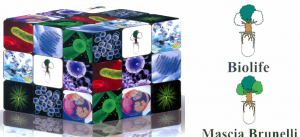
Hao, Y., W.A. Dick, and O.H. Tuovinen. 2002. PCR amplification of 16S rDNA sequences in Fe-rich sediment of coal refuse drainage. Biotechnology Letters 24:1049-1053.
Nicomrat, D., W.A. Dick, and O.H. Tuovinen. 2002. Molecular bacterial ecology of Fe(III)-precipitates in a constructed wetland treating acid coal mine water. Paper No. 614. In: Transactions of the 17th World Congress of Soil Science, p. 614-1 to 614-9. Bangkok, Thailand.
Ostrofsky, E.B., J.B. Robinson, S.J. Traina, and O.H. Tuovinen. 2002. Analysis of atrazine-degrading microbial communities in soils using most-probable-number enumeration, DNA hybridization, and inhibitors. Soil Biology and Biochemistry 34:1449-1459.
Anderson , K.L., K.A. Wheeler, J.B. Robinson, and O.H. Tuovinen. 2002. Atrazine mineralization potential in two wetlands. Water Research 36:4785-4794.
Bevilaqua, D., A.L.L.L. Leite, O. Garcia Jr., and O.H. Tuovinen. 2002. Oxidation of chalcopyrite by Acidithiobacillus ferrooxidans and Acidithiobacillus thiooxidans in shake flasks. Process Biochemistry 38:589-594.
Stamper, D.M., M. Radosevich, K.B. Hallberg, S.J. Traina, and O.H. Tuovinen. 2002. Ralstonia basilensis M91-3, a denitrifying soil bacterium capable of using s -triazines as nitrogen sources. Canadian Journal of Microbiology 48:1089-1098.
Karnachuk, O.V., S.Y. Kurochkina, D. Nicomrat, Y.A. Frank, D.A. Ivasenko, E.A. Phyllipenko, and O.H. Tuovinen. 2003. Copper resistance in Desulfovibrio strain R2. Antonie van Leeuwenhoek 83:99-106.
Carlstrom, C.J., and O.H. Tuovinen. 2003. Mineralization of phenanthrene and fluoranthene in yardwaste compost. Environmental Pollution 124:81-91.
Li, Y., W.A. Dick, and O.H. Tuovinen. 2003. Evaluation of fluorochromes for imaging bacteria in soil. Soil Biology and Biochemistry 36:737-744.
Liu, Q., K.M. Mancl, and O.H. Tuovinen. 2003. Biomass accumulation and carbon utilization in layered sand filter biofilm systems receiving milkfat/detergent mixtures. Bioresource Technology 89:275-279.
Kang, Y.W., K. M. Mancl and O.H. Tuovinen. 2003. Biological treatment of turkey processing wastewater with coarse/fine sand filtration. In: Animal, Agricultural and Food Processing Wastes (Proceedings of the Ninth International Symposium), p. 44-49. American Society of Agricultural Engineers, St. Joseph, MI.
Xi, J., K.M. Mancl, and O.H. Tuovinen. 2003. Transformations and accumulation of carbon in gavel/sand filters treating cheese processing wastewater. In: Animal, Agricultural and Food Processing Wastes (Proceedings of the Ninth International Symposium), p. 341-349. American Society of Agricultural Engineers, St. Joseph, MI.
Radosevich, M., and O.H. Tuovinen. 2004. Microbial degradation of atrazine in soils, sediments and surface waters. In: Pesticide decontamination and detoxification (ACS Symposium Series No. 863) (J.J. Gan, P.C. Zhu, S.D. Aust, and A.T. Lemley, Eds.), p. 129-139. American Chemical Society, Washington, D.C.
Li, Y., W.A. Dick, and O.H. Tuovinen. 2004. Fluorescence microscopy for visualization of soil microorganisms � a review. Biology and Fertility of Soils 39:301-311.
�tyriakov�, I., T.M. Bhatti, J.M. Bigham, I. �tyriak, A. Vuorinen, and O.H. Tuovinen. 2004. Weathering of phlogopite by Bacillus cereus and Acidithiobacillus ferrooxidans. Canadian Journal of Microbiology 50:213-219.
Rowan, M.A., K. M. Mancl, and O.H. Tuovinen. 2004. Clogging incidence of drip irrigation emitters distributing effluents of differing levels of treatment. In: On-site Wastewater Treatment X(Proceedings of the Tenth National Symposium on Individual and Small Community Sewage Systems), p. 84-91. American Society of Agricultural Engineers, St. Joseph, MI.
Xi, J., K.M. Mancl, and O.H. Tuovinen. 2005. Carbon transformation during sand filtration of cheese processing wastewater. Applied Engineering in Agriculture 21:271-274.
Karnachuk, O.V., N.V. Pimenov, S.K. Yusupov, Y.A. Frank, A.H. Kaksonen, J.A. Puhakka, M.V. Ivanov, E.B. Lindstr�m, and O.H. Tuovinen. 2005. Sulfate reduction potential in sediments in the Norilsk mining area, northern Siberia. Geomicrobiology Journal 22:11-25.
Kang, Y.K., K.M. Mancl, and O. H. Tuovinen. 2005. Feasibility of renovating turkey processing wastewater using fixed film bioreactors. In: Proceedings of the 14th Annual Technical Education Conference, 9 p. National Onsite Wastewater Recycling Association, Cleveland, OH.
Gaur, R.S., L. Cai, K.M. Mancl, and O.H. Tuovinen. 2005. Pretreatment of animal fat through coarse sand filters. In: Proceedings of the 14th Annual Technical Education Conference, 10 p. National Onsite Wastewater Recycling Association, Cleveland, OH.
Rowan, M., K.M. Mancl, and O.H. Tuovinen. 2005. Performance of drip irrigation emitters distributing primary and secondary wastewater effluent. In: Proceedings of the 14th Annual hnical Education Conference, 9 p. National Onsite Wastewater Recycling Association, Cleveland, OH.
Rzhepishevska, O.I., E.B. Lindstr�m, O.H. Tuovinen, and M. Dopson. 2005. Bioleaching of sulfidic tailing samples with a novel, vacuum-positive pressure driven bioreactor. Biotechnology and Bioengineering 92:559-567.
Stamper, D.M., J.A. Krzycki, D. Nicomrat, S.J. Traina, and O.H. Tuovinen. 2005. Ring-cleaving cyanuric acid amidohydrolase activity in the atrazine-mineralizing Ralstonia basilensis M91-3. Biocatalysis and Biotransformation 23:387-396.
Nicomrat, D., W.A. Dick, and O.H. Tuovinen. 2006. Assessment of the microbial community in a constructed wetland that receives acid coal mine drainage. Microbial Ecology, in press.
Wang, H., J.M. Bigham, and O.H. Tuovinen. 2006. Formation of schwertmannite and its transformation to jarosite in the presence of acidophilic iron-oxidizing microorganisms. Materials Science and Engineering C, in press. |

